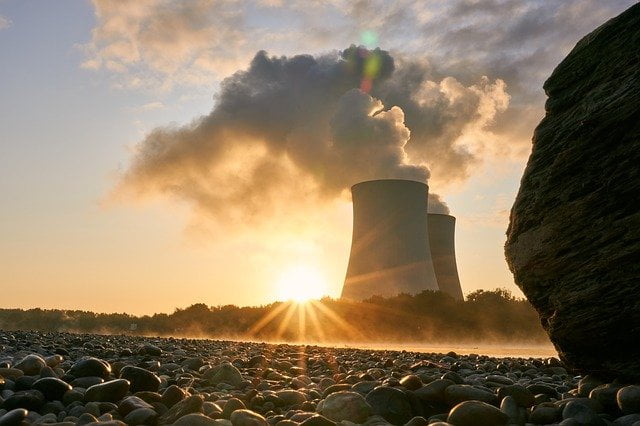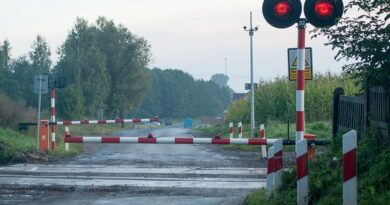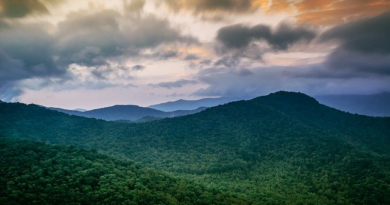Jaitapur Nuclear Reactor
Context:
Recently, the Centre has given in-principle (first step ) approval for setting up of six nuclear power reactors at Jaitapur in Maharashtra.
Contents
About Jaitapur Nuclear Reactor:
- Located at Madban village of Ratnagiri district in Maharashtra (west coast of India).
- It is proposed 9900 MW nuclear power project
- State-run Nuclear Power Corporation of India (NPCIL) is builder and operator of this plant.
- It will be built under Indo-France Civil Nuclear Deal signed in December 2010.
- It will have 6 EPR designed and developed by Areva of France, each of 1650 MW, thus totalling 9900 MW.
- EPR is third generation pressurised water reactors (PWR).
- The estimated cost of this project was around US $15 billion (Rs. 1,000 billion).
- Consortium of French financial institutions will finance this project as a loan.
- The layout of nuclear power plant comprises two major parts — nuclear island and conventional (turbine) island
Jaitapur Location CLICK HERE
What are the risks associated with the Jaitapur Nuclear Reactor project?
- Cost – Electricity from the Jaitapur project will be more expensive than many other sources of electricity, including solar and wind power.
- It was estimated in 2013 that first-year tariffs from the Jaitapur project would be around Rs. 15 per kilowatt-hour.
- This figure must be revised upwards to account for the construction experience with EPRs over the past five years.
- While nuclear costs have been rising, other low-carbon sources of electricity, especially solar energy, have become cheaper.
- In recent auctions for solar PV projects under the National Solar Mission, winning tariff bids in the range of Rs. 2 to Rs. 2.50 per unit have become routine.
- Delay – Across the world, EPRs have experienced delays and cost increases and has also locked consumers into a risky and expensive project with uncertain strategic and economic benefits.
- Debt – Power-generating capacity in India has grown faster than demand causing projects to run into financial difficulties.
- The parliamentary standing committee on energy listed 34 “stressed” projects, including NPAs and “those which have the potential to become NPAs”, with a cumulative outstanding debt of Rs. 1.74 lakh crore. (2018)
- Since the NPCIL’s debts would ultimately be underwritten by the Indian government, if the project encounters financial difficulties, the costs would fall on Indian taxpayers.
What are the concerns about safety measures?
- In addition to the high costs, safety problems with the reactor design and construction have emerged in several EPRs.
- The most serious of these pertained to the pressure vessel, which is the key barrier that prevents the spread of radioactive materials from the reactor.
- There are cases of substandard welding in the reactor’s pipes or high carbon in the reactors’ steel in EPR design as reported the French nuclear safety regulator.
- These safety concerns are further exacerbated by India’s flawed nuclear liability law.
- In the event of an accident, the nuclear liability law would require the public sector NPCIL to compensate victims and pay for clean-up, while largely absolving EDF of responsibility.
- However, under the law, NPCIL can obtain compensation from EDF for the supply of equipment with defects or for sub-standard services.
- But the joint statement issued by the two countries might limit the operator’s (NPCIL) right to obtain compensation.
- This is because the statement promises that the “enforcement of India’s rules” would be in accordance with the International Convention on Supplementary Compensation for nuclear damage.
- This might prevent the NPCIL from exercising its right to claim compensation from EDF as allowed by Indian law.
- If that is the case, then EDF can escape with limited or no consequences even after a severe accident.
- Thus, without any responsibility, EDF will look more towards lowering operational costs for the plant than maintaining the highest safety standards for it.
What should be done?
- Jaitapur
- Both the countries emphasized the need for the project to generate cost-effective electricity.
- To ensure that, the government should clarify on –
- The entire project cost
- Accountability for cost increases and delays
- Agreement on sharing liability
- Unless it is transparent about these details, the implementation of the nuclear power plant will become difficult to materialise.
Nuclear Power Plants in India
- Presently, India has 22 operating nuclear power reactors, with an installed capacity of 6780 MegaWatt electric (MWe). Among these eighteen reactors are Pressurised Heavy Water Reactors (PHWRs) and four are Light Water Reactors (LWRs).
- Nuclear Power is the fifth-largest source of generating electricity in India after coal, gas, wind power, and hydroelectricity.
- The domestic uranium reserve in India is small and the country is dependent on uranium imports from other countries to provide fuel to its nuclear power industry. Since the 1990s, Russia has been a major supplier of nuclear fuel to India.
- The nuclear energy programme in India was launched around the time of independence under the leadership of Homi J Bhabha.
- Prototype Fast Breeder Reactor (PFBR) is being implemented by the Bharatiya Nabhikiya Vidyut Nigam Limited (BHAVINI), a wholly owned Enterprise of the Government of India under the administrative control of the Department of Atomic Energy (DAE).
| Nuclear Power plants in Operation | Nuclear Power Plants under Construction | Planned Nuclear Power Plants |
| Rawatbhata (Rajasthan) Tarapur (Maharashtra) Kudankulam (Tamil Nadu) Kakrapar (Gujarat) Kalpakkam (Tamil Nadu) Narora (Uttar Pradesh) Kaiga (Karnataka) | Kakrapar 3&4 (Gujarat) Rawatbhata (Rajasthan) Kudankulam 3&4 (Tamil Nadu) Kalpakkam PFBR (Tamil Nadu) | Jaitapur (Maharashtra) Kovvada (Andhra Pradesh) Mithi Virdi (Gujarat) Haripur (West Bengal) Gorakhpur (Haryana) Bhimpur (Madhya Pradesh) Mahi Banswara (Rajasthan) Kaiga (Karnataka) Chutka (Madhya Pradesh) Tarapur (Maharashtra) |
India’s Nuclear Energy Program: Three-Stage Programme
Stage one
- Pressurized Heavy Water Reactor uses Natural UO2 as fuel matrix, Heavy water as moderator and coolant.
- In the reactor, the first two plants were of boiling water reactors based on imported technology.
- Subsequent plants are of PHWR type through indigenous R&D efforts.
- India achieved complete self- reliance in this technology and this stage of the programme is in the industrial domain.
- The future plan includes the setting up of VVER type i.e. Russian version of the Pressurized Water Reactor (PWR) is under progress to augment power generation.
- MOX fuel (Mixed oxide) is developed and introduced at Tarapur to conserve fuel and to develop new fuel technology.
Second stage
- Second stage of nuclear power generation envisages the use of Pu-239 obtained from the first stage reactor operation, as the fuel core in fast breeder reactors (FBR).
Third stage
- Third phase of India’s Nuclear Power Generation programme is, breeder reactors using U-233 fuel.
- India’s vast thorium deposits permit design and operation of U-233 fueled breeder reactors.
Nuclear power by country
- Nuclear power plants currently operate in 30 countries.
- Most are in Europe, North America, East Asia and South Asia.
- The United States is the largest producer of nuclear power, while France has the largest share of electricity generated by nuclear power.
- France, Slovakia, Ukraine, and Hungary use them as the source for a majority of the country’s electricity supply as of 2019.
- China has the fastest growing nuclear power program with 11 new reactors under construction, and a considerable number of new reactors are also being built in India, Russia and South Korea.
- Pakistan plans on constructing three to four nuclear power plants by 2030.
- At the same time, at least 100 older and smaller reactors will “most probably be closed over the next 10–15 years”.
- Some countries operated nuclear reactors in the past but have currently no operating nuclear plants.
- Among them, Italy closed all of its nuclear stations by 1990 and nuclear power has since been discontinued because of the 1987 referendums on which Italians voted.
- Several countries are currently operating nuclear power plants but are planning a nuclear power phase-out.
Source: Indian Express
Also check: Protest against Jaitapur nuclear power plant
You can find many articles on SPACE and SCIENCE AND TECHNOLOGY (part of GS III) in our website. Go through these articles share with your friends and post your views in comment section.
Discover more from Simplified UPSC
Subscribe to get the latest posts sent to your email.



